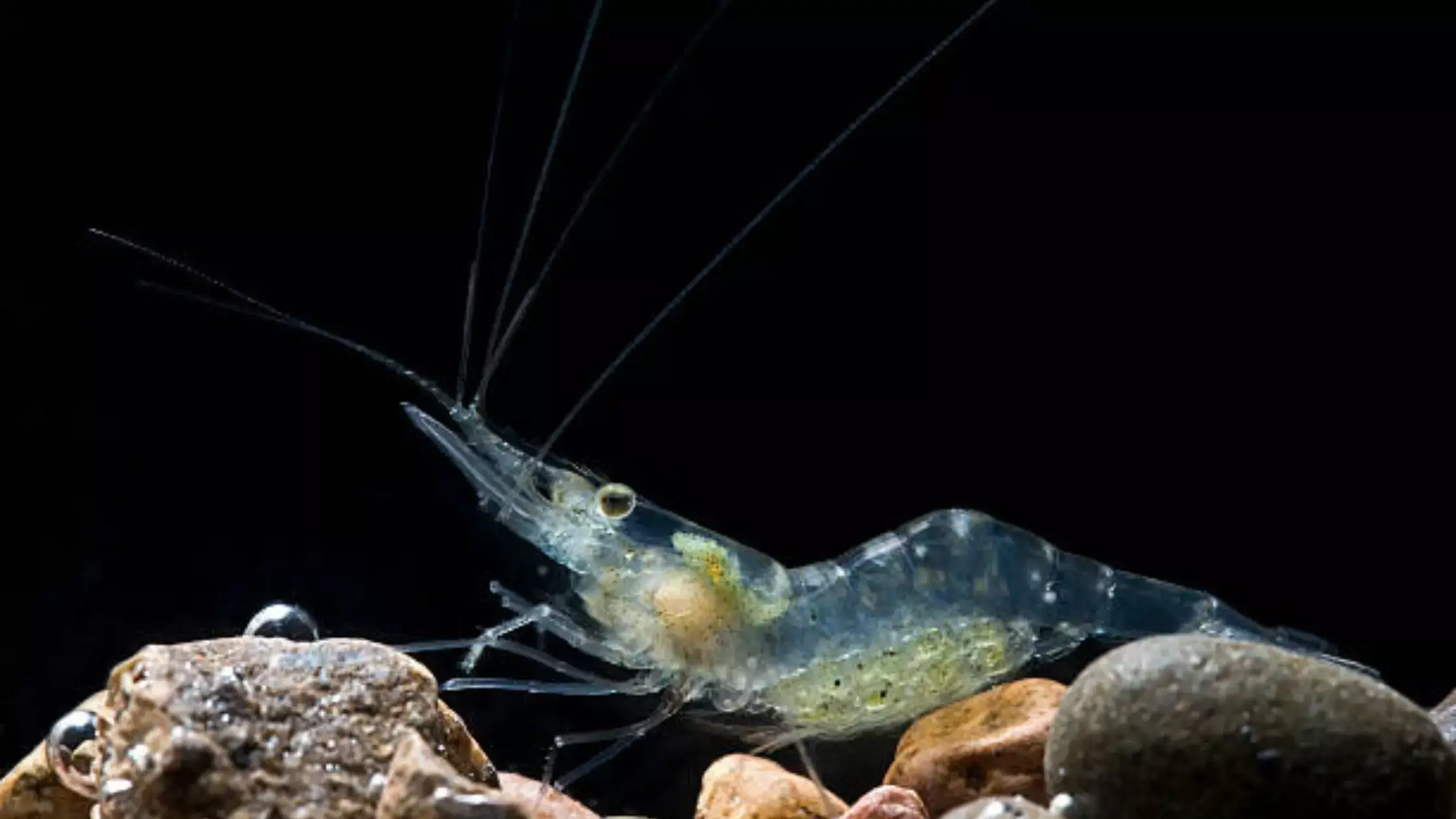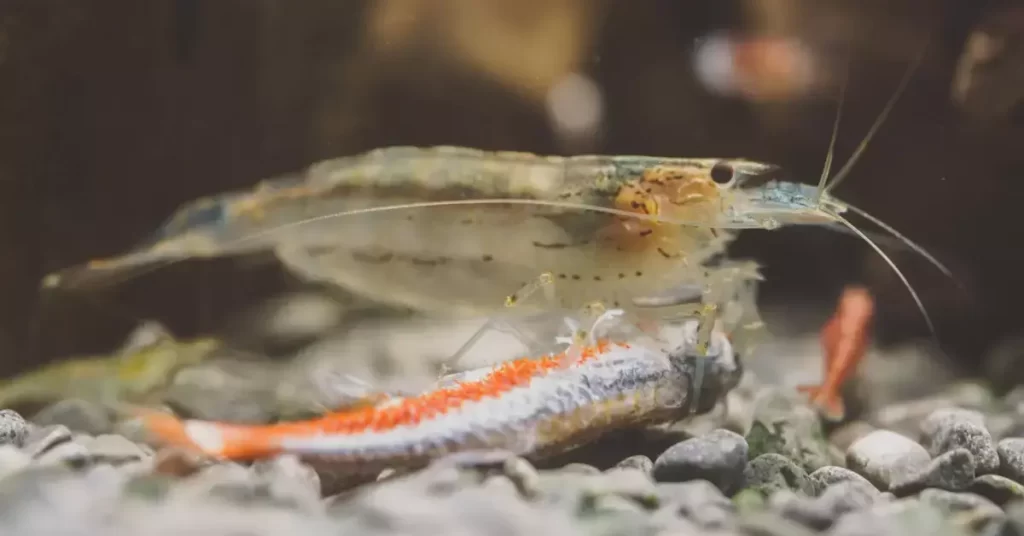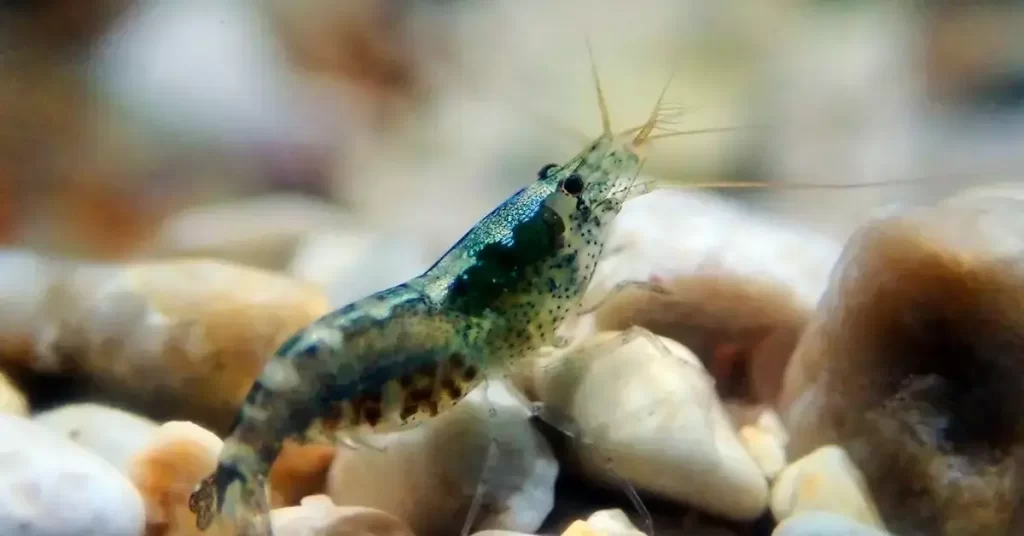Baby Ghost Shrimp Care 101

The baby ghost shrimp is one of the most fascinating creatures in our environment. Baby Ghost Shrimp inhabit a wide variety of aquatic habitats, from the ocean to freshwater rivers and lakes.
They are an important part of the food web, feeding on detritus and microscopic algae. These tiny creatures are highly social animals.
They live in colonies that can number in the thousands! Each colony has a hierarchy, with a single dominant male at the top. When males hit sexual maturity, they will fight to ascend in rank and become the dominant male of a colony.
They are tiny, but they have a lot to offer! Here are some things you ought to know – their social structure, hunting habits, long-distance migration patterns, and more!
What Do Baby Ghost Shrimp Look Like?

Baby Ghost shrimp look a lot like adult ghost shrimp but they are smaller. They have a tail and two feelers on their head.
They also have a black stripe down the middle of their body. Baby ghost shrimp eat things that sink to the bottom of the water like algae and bits of dead plants or animals.
When they get bigger, ghost shrimp eat things like fish food and small insects. Ghost shrimp come from eggs which come from another ghost shrimp or another animal that lives in the water and has eggs.
Ghost shrimp live in salt water or fresh water, but they need to live in the ocean when they are little.
Baby ghost shrimp are born in the ocean and when they are big enough, they move to lakes.
Ghost shrimp can live for a long time. Some Ghost Shrimp have been known to live for up to three years.
Baby Ghost Shrimp 101 Care:

Ghost shrimp are a great addition to any aquarium, but they do require some special care. we’ll go over the basics of how to take care of your ghost shrimp.
The most important thing to remember when caring for ghost shrimp is to keep their aquarium tank clean.
Make sure to remove any uneaten food or waste products from the tank on a regular basis. You should also change the water in the tank every week or two, depending on how often you feed your shrimp.
Another important thing to keep in mind is that ghost shrimp need plenty of oxygen in order to survive.
Make sure to keep the tank well aerated and free of clutter which can obstruct airflow. Finally, be sure to provide your shrimp with a good source of food.
They will eat most types of aquarium food, but they prefer live food such as brine shrimp or bloodworms.
With these basic tips in mind, you should be able to care for your ghost shrimp successfully.
How To Breed Ghost Shrimp?

Breeding ghost shrimp is not difficult. For some shrimp, it may be necessary to introduce a mated pair of the same species in order to get breeding behavior. If you are not sure if your shrimp are ready to breed, look for the following signs:
- Female shrimp’s eggs are distributed evenly over its body.
- The last pair of swimming legs will often be modified into brooding claws.
- The abdomen of the female shrimp will be inflated with eggs.
- Breeder males will have enlarged abdominal segments used for storing sperm.
Once you have determined that your shrimp are ready to breed, there are a few things you need to do in order to facilitate breeding.
The first step is to set up a breeding tank. The tank should be at least 10 gallons in size and filled with aged water that has a pH of 6.5 – 7.5 and a water hardness of 5 – 15 dGH.
You can also use a breeding net or breeder trap to separate the breeding shrimp from the rest of the colony.
Once you have set up the breeding tank, it is time to add the shrimp. Add the female first and then the male a few minutes later.
If spawning does not occur within a few hours, you can try adding a mated pair of the same species.
Ghost shrimp will usually lay their eggs on plants or rocks in the tank. Once the eggs have been laid, it is important to remove the parents from the tank so they do not eat the eggs.
The eggs will hatch in 2 – 3 weeks and the baby shrimp can be moved to a fry tank once they have reached a size of 1 – 2 mm.
That’s it! You have now successfully bred ghost shrimp. Good luck!
What To Feed Baby Ghost Shrimp?
When it comes to feeding baby ghost shrimp, there are a few things you need to keep in mind. For one, they can eat a wide variety of foods, including flake food, brine shrimp, bloodworms, and tubifex worms.
You can also give them algae wafers or blanched vegetables. As with any other type of shrimp, it’s important to make sure that they have access to clean water at all times.
One thing you need to avoid feeding baby ghost shrimp is any sort of meat. They simply cannot digest meat and it will end up rotting in their tanks.
If your babies die, try changing out 90% of their water and then check the tank for decaying matter before completely cleaning it out. The decaying matter can cause problems with future batches of shrimp.
Conclusion:
In this blog, you have learned how to care for baby ghost shrimp. These tiny creatures are a lot of work and require constant attention, but if they’re cared for properly, their tank will be clean and thriving in no time.
It’s important that your water parameters stay within the range needed by baby ghost shrimp so, make sure to use natural materials like sand or gravel because some chemicals can potentially harm small animals like baby ghost shrimp.

